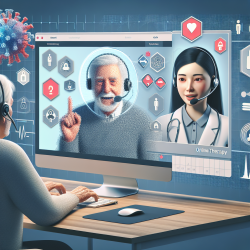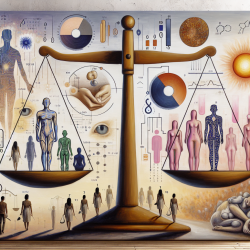Introduction
In recent years, the field of mental health has witnessed significant advancements in technology-driven diagnostic tools. One such innovation is digital phenotyping, which offers a promising approach to diagnosing major depressive episodes (MDE) more accurately. The research article titled "Digital Phenotyping for Differential Diagnosis of Major Depressive Episode: Narrative Review" provides a comprehensive overview of how digital phenotyping can be utilized to improve diagnostic precision and treatment outcomes for individuals experiencing MDE.
Understanding Digital Phenotyping
Digital phenotyping involves the continuous and non-intrusive monitoring of human behavior using data from digital devices. This approach captures two types of data: active data, which requires user input, and passive data, which is collected without user intervention. By analyzing these data streams, clinicians can identify digital markers that indicate the presence of psychiatric disorders, including MDE.
Key Findings from the Research
The narrative review conducted by Torous et al. (2023) synthesized information from 74 relevant studies, highlighting several promising digital markers for MDE. These markers include:
- Speech Analysis: Changes in speech features such as prosody, spectral characteristics, and speech content were identified as indicators of MDE. For instance, individuals with depression often exhibit reduced speech rate, increased pause time, and a tendency to use more negative emotional language.
- Nonverbal Behavior: Nonverbal cues such as facial expressivity, head movements, and gaze patterns were found to correlate with depression severity. Patients with MDE tend to display fewer affiliative facial expressions and diminished head motion.
- Physiological Measures: Heart rate variability (HRV) and electrodermal activity (EDA) were explored as potential physiological markers. Lower HRV and EDA levels were associated with higher depression severity, offering objective measures of autonomic nervous system functioning.
Implications for Practitioners
For practitioners, the integration of digital phenotyping into clinical practice holds immense potential. By leveraging digital markers, clinicians can achieve more accurate differential diagnoses of MDE, distinguishing between conditions such as major depressive disorder (MDD), bipolar disorder (BD), and posttraumatic stress disorder (PTSD). This precision in diagnosis can lead to more targeted and effective treatment strategies, ultimately improving patient outcomes.
Encouraging Further Research
While the findings from the narrative review are promising, further research is needed to validate these digital markers across diverse populations and clinical settings. Longitudinal and prospective studies can help establish the reliability and generalizability of digital phenotyping in diagnosing MDE. Practitioners are encouraged to explore these emerging tools and contribute to the growing body of research in this field.
Conclusion
Digital phenotyping represents a significant advancement in the field of mental health diagnostics. By harnessing the power of digital markers, practitioners can enhance their diagnostic accuracy and provide more personalized care to individuals experiencing major depressive episodes. As we continue to explore the potential of digital phenotyping, collaboration between researchers and clinicians will be crucial in unlocking its full potential.
To read the original research paper, please follow this link: Digital Phenotyping for Differential Diagnosis of Major Depressive Episode: Narrative Review.










